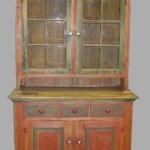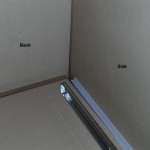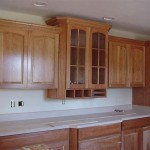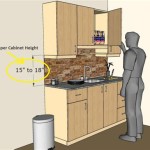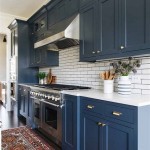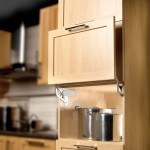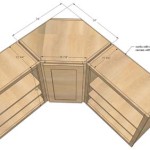Kitchen Cabinet Replacement Doors: A Comprehensive Guide
Kitchen cabinets are a significant investment and a prominent feature in any kitchen space. Over time, cabinet doors can show wear and tear, become outdated in style, or simply fail to complement a desired kitchen aesthetic. Replacing the entire cabinet structure can be a costly and disruptive process. A viable and often more economical alternative is focusing on replacing the doors alone. This approach, known as kitchen cabinet replacement doors, allows homeowners to refresh the look of their kitchen without undergoing a complete renovation.
The concept of kitchen cabinet replacement doors involves removing the existing cabinet doors and drawer fronts and installing new ones. The existing cabinet boxes, or frames, remain in place, maintaining the structural integrity and layout of the kitchen. This method offers several advantages, including reduced cost, faster completion time, and less disruption to daily life. Choosing the right replacement doors, however, requires careful consideration of style, material, and hardware to ensure a cohesive and updated look.
Cost-Effectiveness and Efficiency
The primary advantage of opting for kitchen cabinet replacement doors is the significant cost savings compared to a full cabinet replacement. Replacing the entire cabinetry involves not only the cost of new materials but also the labor associated with demolition, disposal of old cabinets, and installation of new ones. Replacing only the doors eliminates these additional expenses. The savings can be substantial, allowing homeowners to allocate the budget towards other kitchen upgrades, such as new countertops, appliances, or backsplashes.
Beyond cost, the efficiency of this method is a key motivator. Replacing cabinet doors is a relatively straightforward process that can be completed in a fraction of the time required for a full cabinet replacement. The disruption to the kitchen is minimized, allowing homeowners to continue to use the space with limited inconvenience. This is especially beneficial for households with busy schedules or limited tolerance for prolonged construction projects. The installation typically involves removing the old doors, measuring and installing new hinges, and attaching the new doors. Many homeowners with basic DIY skills can even undertake this project themselves, further reducing costs.
Furthermore, replacing only the doors reduces waste. Disposing of old cabinets contributes to landfill waste. By reusing the existing cabinet boxes, this method promotes a more sustainable approach to kitchen renovation. This aligns with environmentally conscious homeowners who seek to minimize their impact on the environment.
Styles, Materials, and Finishes
A vital aspect of kitchen cabinet replacement doors is the wide array of style, material, and finish options available. This allows homeowners to customize the look of their kitchen to match their personal preferences and the overall design of their home. The style of the door significantly impacts the overall aesthetic, ranging from traditional to modern and everything in between.
Common door styles include: *
Shaker:
A classic and versatile style characterized by a five-piece flat panel with a simple, clean design. *Raised Panel:
Features a central panel that is raised above the surrounding frame, often with decorative detailing. *Flat Panel (Slab):
A minimalist style with a smooth, flat surface, ideal for contemporary kitchens. *Glass Front:
Incorporates glass panels, allowing for visibility into the cabinet's contents. These can be clear, frosted, or textured. *Louvered:
Features horizontal slats, adding texture and visual interest. This style is often used in coastal or cottage-style kitchens.The material used for the doors also plays a crucial role in the appearance and durability. Common materials include: *
Solid Wood:
Offers a natural beauty and lasting durability. Popular wood species include maple, oak, cherry, and walnut. *Wood Veneer:
A thin layer of real wood applied over a core material, such as plywood or MDF. This provides the look of solid wood at a lower cost. *MDF (Medium-Density Fiberboard):
A manufactured wood product that is smooth, stable, and easy to paint. It is a cost-effective option for painted cabinets. *Laminate:
A durable and easy-to-clean surface applied over a core material. Laminates come in a wide range of colors and patterns, including wood grain. *Thermofoil:
A vinyl material that is heat-fused to a core material, creating a seamless and water-resistant surface. It is a popular option for modern kitchens.The finish is the final layer of protection and aesthetic enhancement. Options include: *
Paint:
Offers a wide range of color options and can be easily customized. *Stain:
Penetrates the wood, highlighting its natural grain and adding warmth. *Glaze:
Applied over paint or stain to add depth and dimension, accentuating details. *Distressed:
Creates a weathered or aged look, often with intentional imperfections.Selecting the right combination of style, material, and finish is crucial for achieving the desired aesthetic. It is important to consider the existing kitchen décor, the overall style of the home, and personal preferences when making these decisions.
Hardware and Installation Considerations
Beyond the doors themselves, the hardware and installation process are critical components of a successful kitchen cabinet replacement project. Hardware, including hinges and knobs or pulls, significantly impacts the functionality and aesthetics of the cabinets. Choosing the correct hinges ensures smooth operation and proper alignment of the doors. Selecting aesthetically pleasing knobs or pulls complements the door style and enhances the overall look of the kitchen.
Hinges come in various types, including: *
Concealed (European):
Hidden hinges that provide a clean, seamless look. These are adjustable for precise alignment. *Face-Frame:
Surface-mounted hinges that are visible when the door is closed. *Offset:
Used when the door overlaps the cabinet frame. These offer a traditional look.Knobs and pulls provide a functional grip for opening and closing the doors and drawers. They also serve as decorative elements that can enhance the style of the space. Options include: *
Knobs:
Small, rounded handles that are typically attached with a single screw. *Pulls:
Longer handles that are attached with two or more screws. *Cup Pulls:
Recessed pulls that are shaped like cups, often used in traditional kitchens. *Bar Pulls:
Sleek, modern pulls that are shaped like bars.The installation process requires careful attention to detail. Accurate measurements are essential to ensure that the new doors fit properly. It is important to measure the existing doors and the cabinet openings precisely. When ordering replacement doors, it is crucial to specify the correct size and hinge boring pattern.
The installation process typically involves the following steps: 1.
Removing the old doors:
Unscrew the hinges from the cabinet boxes and remove the doors. 2.Measuring and marking hinge locations:
Use the old doors as a template to mark the locations for the new hinges on the cabinet boxes. 3.Installing the new hinges:
Attach the new hinges to the cabinet boxes, ensuring they are properly aligned. 4.Attaching the new doors:
Align the new doors with the cabinet boxes and attach them to the hinges. 5.Adjusting the hinges:
Fine-tune the hinge adjustments to ensure the doors are properly aligned and close smoothly. 6.Installing knobs or pulls:
Mark and drill holes for the knobs or pulls and attach them to the doors and drawers.While many homeowners can handle this project themselves, professional installation is recommended for those who lack experience or are unsure about their skills. Professional installers have the tools and expertise to ensure that the doors are properly installed and aligned, resulting in a professional-looking finish.
Before embarking on a kitchen cabinet replacement door project, it is advisable to thoroughly research the available options, compare prices from different suppliers, and carefully plan the installation process. By paying attention to these details, homeowners can achieve a stunning kitchen transformation without breaking the bank.

Replacement Cupboard Doors Cabinet Kitchen Or Bathroom Nederland

Cabinet Doors Drawers Replacement Revelare Kitchens

Reface Or Replace Your Kitchen Units Dream Doors

Kitchen Cabinet Doors The Replacement Door Company

How To Add Glass Cabinet Doors Confessions Of A Serial Do It Yourselfer

Save Big On Your Remodel With Cabinet Door Replacement N Hance Of Ventura County

Replacement Doors Kitchen Kitchens And Bedrooms From Swansea Home Improvements

How Much Are Replacement Kitchen Doors Guide 2024

21 Diy Affordable Ways To Redo Kitchen Cabinets Extra Space Storage

Replacement Kitchen Doors What Are The Benefits Door Work
Related Posts

